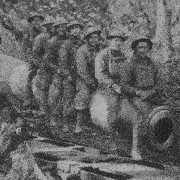|
What is the most powerful flying bug? This poll is closed. |
|||
|---|---|---|---|
| 🦋 |
|
15 | 3.71% |
| 🦇 |
|
115 | 28.47% |
| 🪰 |
|
12 | 2.97% |
| 🐦 |
|
67 | 16.58% |
| dragonfly |
|
94 | 23.27% |
| 🦟 |
|
14 | 3.47% |
| 🐝 |
|
87 | 21.53% |
| Total: | 404 votes | ||
|
Putin has no current reason to want to negotiate. You would have to be mad to do so with the bad faith demonstrated (and openly boasted about) in the past. I imagine an unconditional surrender might be entertained at some distant point. Any hoping around negotiation would be for delaying tactics so that one factory hand painting bespoke $100k shells can crank out a few more. Again, exact same reason to bad faith negotiate as in the past. More build-up time. Same playbook. No new tricks. Give it a few million more dead before anything happens on that front. Edit - now that's a snipe.
|
|
|
|

|
| # ? May 27, 2024 21:13 |
|
Ardennes posted:Because the US has actually put a ton of its influence behind this thing, and if it goes south in a big way, it is a giant indicator the spell is broken and that the US actually the paper tiger it seems it is. So this is all NATO projecting it's desire for negotiation onto Putin, basically
|
|
|
|
Good news for Ukraine's long-anticipated counteroffensive - Ukraine’s Powerful 82nd Brigade, Once Held In Reserve, Has Finally Joined The Counteroffensive https://www.forbes.com/sites/davida...sh=387d9ee0452c Ukraine’s Powerful 82nd Brigade, Once Held In Reserve, Has Finally Joined The Counteroffensive David Axe Aug 15, 2023,07:05pm EDT The Ukrainian air assault forces finally have deployed their most powerful unit. The 2,000-person 82nd Air Assault Brigade, which is stacked with Marder and Stryker fighting vehicles and Challenger 2 tanks, rolled into action around Robotyne, in southern Ukraine’s Zaporizhzhia Oblast, apparently in the last few days. The deployment is good and bad news for Kyiv’s long-anticipated counteroffensive, which kicked off with a series of coordinated assaults across southern and eastern Ukraine starting on June 4. The 82nd Brigade and its sister air-assault unit, the 46th Brigade, were some of the last major units that the Ukrainian general staff was holding in reserve. In finally sending those formations into battle, the Ukrainians could significantly boost their firepower along one of the main axes of the counteroffensive — the one stretching 50 miles from Russian-occupied Robotyne to occupied Melitopol, just north of the Black Sea coast. But no brigade can fight forever. When the 46th and 82nd Brigades pull back for rest, reset and repairs, there might not be any equally powerful fresh brigades to fill in for them. The counteroffensive could lose momentum. This neither is a new problem, nor one that’s unique to the Robotyne axis. The Ukrainian marine corps, which has focused its efforts along the Mokri Yaly River Valley, 50 miles to the east, has deployed all four of its front-line brigades at the same time along a 10-mile-wide sector. The concentration of marine forces along the Mokri Yaly River has paid off for Kyiv. The division-size marine force has liberated a chain of settlements on the road to occupied Mariupol, on the Black Sea coast 50 miles to the south. Most recently Urozhaine, where marine gunners firing American-made cluster shells massacred retreating Russian troops this weekend. But the marines eventually will need rest. And it’s not apparent which forces can fill in for them. While Ukraine still has uncommitted territorial and national guard brigades, these formations generally lack the firepower and training that make marine brigades so effective. The same clock is ticking over in Robotyne, as a powerful Ukrainian air-assault force assembles outside the town. A Russian drone strike on one of the 82nd Brigade’s American-made Stryker wheeled fighting vehicles, apparently earlier this week, places the 82nd Brigade within a mile of the Russian 1430th Motor Rifle Regiment’s positions inside Robotyne. Russian drones have spotted at least one of the 82nd Brigade’s 90 Strykers as well as one of its 40 German-made Marder tracked fighting vehicles. The Russians apparently haven’t located the brigade’s 14 ex-British Challenger 2 tanks. But we know the 69-ton tanks are inching toward the line of contact. The most recent photo of a Ukrainian Challenger 2 to appear online depicts the tank with a turret-mounted cage that the crew clearly hopes will help to protect the vehicle from drone strikes. These “cope cages” are a battlefield expedient that brigades tend to install on their own as they’re getting ready to enter combat. If the Ukrainian marines’ experience in Urozhaine is any indication, the surge of air-assault troops around Robotyne could result in rapid gains for Kyiv’s forces. The Ukrainians already were probing, and attempting to flank, the Russian garrison in Robotyne. Now they’ve got two more brigades—and especially heavily-armed ones—to bolster their efforts. If the Russians in Robotyne can hold their ground, and endure what is likely to be a major but temporary surge in Ukrainian combat power, they might eventually find themselves in a position to strike back at the Ukrainians—once the surge brigades rotate off the front line without replacement.
|
|
|
|
tatankatonk posted:What's to understand? They had been building and profiting from empire and race for literally 500 years, they can't pivot on a dime and suddenly accept those people as equals Soldiers of Empire: Indian and British Armies in World War II How are soldiers made? Why do they fight? Re-imagining the study of armed forces and society, Barkawi examines the imperial and multinational armies that fought in Asia in the Second World War, especially the British Indian army in the Burma campaign. Going beyond conventional narratives, Barkawi studies soldiers in transnational context, from recruitment and training to combat and memory. Drawing on history, sociology and anthropology, the book critiques the 'Western way of war' from a postcolonial perspective. Barkawi reconceives soldiers as cosmopolitan, their battles irreducible to the national histories that monopolise them. This book will appeal to those interested in the Second World War, armed forces and the British Empire, and students and scholars of military sociology and history, South Asian studies and international relations. The British Empire and the Second World War In 1939 Hitler went to war not just with Great Britain; he also went to war with the whole of the British Empire, the greatest empire that there had ever been. In the years since 1945 that empire has disappeared, and the crucial fact that the British Empire fought together as a whole during the war has been forgotten. All the parts of the empire joined the struggle and were involved in it from the beginning, undergoing huge changes and sometimes suffering great losses as a result. The war in the desert, the defence of Malta and the Malayan campaign, and the contribution of the empire as a whole in terms of supplies, communications and troops, all reflect the strategic importance of Britain's imperial status. Men and women not only from Australia, New Zealand and India but from many parts of Africa and the Middle East all played their part. Winston Churchill saw the war throughout in imperial terms. The British Empire and the Second World War emphasises a central fact about the Second World War that is often forgotten. Empire Lost: Britain, the Dominions and the Second World War Using government records, private letters and diaries and contemporary media sources, this book examines the key themes affecting the relationship between Britain and the Dominions during the Second World War, the Empire's last great conflict. It asks why this political and military coalition was ultimately successful in overcoming the challenge of the Axis powers but, in the process, proved unable to preserve itself. Although these changes were inevitable the manner of the evolution was sometimes painful, as Britain's wartime economic decline left its political position exposed in a changing post-war international system  🥹
|
|
|
|
Ardennes posted:Small loitering drones are good at damaging equipment and general harassment but generally are a lot more awkward about targeting personnel especially if they are in fortified positions. Ideally you would have artillery and drones working together. The thing about loitering drones is that they need to be part of a reconnaissance complex to be truly effective. Compare the effect of the much-hyped Switchblade, which AFAIK have a small handful of videos of them in use, versus the Lancet, which has destroyed or damaged hundreds of guns, SPGs, radars, and SAMs (i.e., high level assets usually well behind the lines), against a relatively smaller number of tactical targets like armored vehicles. Russia has integrated loitering drones into a theater-wide effort to suppress Ukrainian fires (in addition to widespread use of tactical quadcopters), whereas Ukraine uses loitering drones almost exclusively tactically.
|
|
|
|
2,000-person
|
|
|
tatankatonk posted:Less than one week of training? Jesus christ that's probably less than like last-ditch civilian militias outside of Moscow in 1941 Literally volksturm. Again.
|
|
|
|
|
Slavvy posted:Literally volksturm. Again. And 5 grand for a medical certificate to get out of jail free across the border in Poland.
|
|
|
|
folxsturm
|
|
|
mawarannahr posted:folxsturm
|
|
|
|
|
sum posted:The thing about loitering drones is that they need to be part of a reconnaissance complex to be truly effective. Compare the effect of the much-hyped Switchblade, which AFAIK have a small handful of videos of them in use, versus the Lancet, which has destroyed or damaged hundreds of guns, SPGs, radars, and SAMs (i.e., high level assets usually well behind the lines), against a relatively smaller number of tactical targets like armored vehicles. Russia has integrated loitering drones into a theater-wide effort to suppress Ukrainian fires (in addition to widespread use of tactical quadcopters), whereas Ukraine uses loitering drones almost exclusively tactically. During the offensive, the Ukrainians have been using some suicide drones, usually they seem more hobbled together than Lancets with a lower payload but they at least have been damaging equipment and occasionally taking out thinner skin vehicles. They haven't had nothing to show. The problem is they usually don't have much to respond to Russia's heavier systems including large scale 152mm fire missions, TOS strikes, and now glide bomb use. In addition, while they have taken out Russian artillery and at least put tanks out of order...the Russians just have tons more of them and they have extensive repair capabilities. This is the whole emptiness to this whole thing, the Russians clearly has tons more equipment and men and can cycle out units when the Ukrainians can't and most of the territory they have been fighting for was just borderlands that the Russians purposefully took as buffer zones, there is a reason why their defense lines haven't really been broken. Now the Ukrainians are using the last of their better equipment, and it will be time to "wait until spring."
|
|
|
|
Ardennes posted:Small loitering drones are good at damaging equipment and general harassment but generally are a lot more awkward about targeting personnel especially if they are in fortified positions. Ideally you would have artillery and drones working together. Bad news for the credibility of Ardennes - All authoritative sources confirm that when loitering munitions arrive, the nail will be driven into the coffin of Russia's already unsustainable losses. 
|
|
|
|
Good news for Ukraine - The arrival of HIMARS has transformed the battle and is dramatically tipping the scales of the conflict between Ukraine and Russia https://www.wsj.com/articles/himars-transform-battle-for-ukraine-modern-warfare-11665169716 Himars Transform the Battle for Ukraine—and Modern Warfare By Stephen Kalin and Daniel Michaels | Photographs by Adrienne Surprenant /MYOP for The Wall Street Journal MYKOLAIV REGION, Ukraine—A global revolution in warfare is dramatically tipping the scales of the conflict between Ukraine and Russia, putting in the hands of front-line troops the kind of lethality that until recently required aircraft, ships or lumbering tracked vehicles. It also has the capacity to change battlefields far from Eastern Europe. The centerpiece of the new battle order is the M142 High Mobility Artillery Rocket System, or Himars. Provided by the U.S. and operated by Ukrainian soldiers since June, they are augmenting lightweight and precise weaponry that includes drones, Javelin antitank rockets and Stinger antiaircraft missiles, enabled by GPS guidance and advanced microelectronics. Able to pick off Russian military bases, ammunition depots and infrastructure far behind front lines, Ukraine’s 16 Himars helped its troops this summer halt a bloody Russian advance. Since last month, Ukrainians have seized back swaths of territory in their country’s east and ground down Russian troops in the south. Washington recently pledged to deliver another 18 Himars. Within Kyiv’s arsenal, Himars offer a unique combination of range, precision and mobility that allows them to do the job traditionally handled by dozens of launchers firing thousands of shells. By shrinking launchers and nearly guaranteeing hits on targets, Himars and the other equipment are upending century-old assumptions about how wars must be fought—and particularly about military supplies. Himars’s vastly improved accuracy also collapses the massive logistical trail that modern infantry has demanded. “Himars is one part of a precision revolution that turns heavily equipped armies into something light and mobile,” said Robert Scales, a retired U.S. Army major general who was among the first to envision Himars in the 1970s. Last month The Wall Street Journal gained rare access to a front-line Himars unit. One evening at dusk the men in this unit were making dinner when orders for their fifth mission of the day arrived: to target Russian barracks and a river barge ferrying munitions and tanks 40 miles away. Six men piled into their two Himars: a driver, targeter and commander in each, accompanied by the battery commander and a security detail in an armored personnel carrier. The commander plugged coordinate data into a tablet computer to determine the safest location for firing. Within minutes, the two Himars rumbled out from cover under an apricot grove toward the launch spot in a nearby sunflower field. Thirty seconds after arriving, they fired seven missiles in quick succession. Before the projectiles hit their targets, the trucks were returning to base camp. Ten minutes later came another pair of targets: Soviet-era rocket launchers some 44 miles away. Off rolled the Himars again and fired another barrage of missiles. Soon after, the soldiers were back at camp and finishing their dinner. Some pulled up videos on Telegram showing the fruit of their labor: burning Russian barracks. Ukraine’s Himars rockets, which can fly 50 miles, have hit hundreds of Russian targets, including command centers, ammunition depots, refueling stations and bridges, choking off supplies to front-line units. Since stopping Russia’s spring advance across Ukraine’s eastern Donbas region, they are now targeting retreating Russian forces. Ukrainian commanders estimate that Himars are responsible for 70% of military advances on the Kherson front, the unit’s commander, Lt. Valentyn Koval, said. The four vehicles in his unit have killed hundreds of Russians and destroyed about 20 antiaircraft batteries, he said. Russian artillery—like most such systems since World War I—lacks precision. To destroy a target, troops generally level everything around it. Gunners following maps rain shells in a grid pattern that aims to leave no terrain in a quadrant untouched. Russian forces in Ukraine are lobbing dozens of shells per acre to hit one objective, analysts say. Himars can do the job with one rocket carrying a 200-pound explosive warhead. Each Ukrainian Himars carries one six-rocket pod that can effectively land the punch of more than 100,000 lbs. of traditional artillery. Artillery is cumbersome. During Operation Desert Storm in Iraq in 1991, it accounted for more than 60% of a U.S. division’s weight. Moving it demands soldiers, trucks, fuel and time, plus additional soldiers and vehicles to protect those supply operations. All that support sucks resources and makes a juicy target, as the world saw in the opening days of the Ukraine war, when a Russian supply convoy halted by Ukrainian attacks outside Kyiv became a 40-mile-long sitting duck. “It’s not just the precision of Himars that’s revolutionary,” said Gen. Scales. “It’s the ability to reduce the tonnage requirements by an order of magnitude or better.” The supply chain for Himars units consists of factory-packaged rocket pods stashed at pickup points in the nearby countryside and usually hidden by foliage. A cargo truck deposits the camouflage-green pods—each a little bigger than a single bed—at a string of designated locations, not unlike a commercial delivery route. Himars teams drive to the ammo drop spots, where a waiting three-man loading team removes spent pods and swaps in full ones within five minutes, using a crane integrated into the vehicle. “Himars is one of, if not the most, efficient type of weapons on the battlefield,” said Lt. Koval, a jocular 22-year-old with a Pokémon ringtone on his cellphone. “This gives us an opportunity to react quickly, hit in one place, move to another, and destroy effectively.” Russia’s best truck-based rocket launchers, by contrast, can require around 20 minutes to set up in the launch spot and 40 minutes to reload—critical time when the enemy tries to return fire. The Himars can drive faster and has an armored crew cabin. Ukrainian Himars teams stay lean by spending weeks in the field without returning to a larger base. Lt. Koval’s unit, which received the first Himars in June, has spent the past three months sleeping in tents beside the launchers or inside nearby support vehicles. The men, trained by U.S. instructors outside Ukraine, remain on standby for new targets, switching into action and just as casually returning to mundane activities like making coffee or playing cards. On the front armor of one Himars, the soldiers painted a white grin below the Ukrainian word for “workhorse.” On the other, whose odometer shows it has traveled over 13,000 miles, they stenciled 69 black skulls, commemorating significant confirmed hits. Mission details arrive as geographic coordinates, with a target description and instructions on whether to use explosive missiles for armored targets or fragment charges for hitting personnel. Targeting tips come from sources including U.S. intelligence and partisans in occupied territories. The Himars commanders then pick a suitable launch location and guide the vehicles into place. Inside the cab, the vehicle commander sits between the driver and the targeter, who feeds the mission data into a computer. When the vehicle reaches the launch site, the targeter presses one button to angle the missiles skyward and another button to fire. The missiles roar into the night sky with a burst of flame, leaving a cloud of smoke over the field. The launcher is lowered and the vehicle speeds back to its tree cover. “We are the juiciest target in the region,” said Lt. Koval. “So we need to maneuver to survive.” Maneuverability is exactly why Himars was created as a downsized version of a tank-like weapon, the Multiple Launch Rocket System, which has also been provided to Ukraine by the U.K. and Germany. First used in Desert Storm, before the advent of precision artillery, massed batteries of the 12-rocket vehicles unleashed so much explosive force and shrapnel that Iraqi troops dubbed it “steel rain.” MLRS’s heft means that only the largest military cargo jets can airlift it and they land far from the fighting. To move distances on land requires a flatbed truck. Himars was envisioned as a lighter, more agile version. The push for nimble units equipped with lightweight gear became part of a broader effort to streamline the U.S. military after the Cold War that reached its peak under Defense Secretary Donald Rumsfeld starting in 2001, but was sidetracked by wars in Afghanistan and Iraq. Himars, on wheels and with only six rockets, was a project that stayed on track. One initial shortcoming, the Pentagon discovered, was that six cluster bombs didn’t pack enough punch to destroy many targets. GPS-guided artillery, rolled out in the mid-1990s, gave Himars new life. Precision meant the rockets didn’t need to explode together for a giant blast. They could each pick off a different geolocated target. “The precision revolution changes everything,” said Gen. Scales, who considers the transformation to be the kind of epoch-making military shift that redefines warfare and will now tip battlefield advantage from massed armies to small infantry units. Such shifts were rare in the past, including the eclipse of infantry by horse-mounted warriors around the fourth century and the introduction of gunpowder to Europe a millennium later, said Gen. Scales, a military historian who served as commandant of the U.S. Army War College. Others came around the U.S. Civil War with the introduction of precise rifles and artillery and machine guns, which proved so deadly in World War I, and at the start of World War II, when the German blitzkrieg merged motorized transportation with radio coordination of troops. Now, inexpensive microprocessors are putting what Gen. Scales dubs “cheap precision” in the hands of Ukrainian soldiers. “If I enter the coordinates of this hole,” said Lt. Koval, standing by a molehill the size of a shoebox, “it will hit this hole.” On one particularly busy day in late August, the two Himars under Lt. Koval’s command worked in tandem with two others. When his pair ran out of ammunition, they dropped back to reload while the other duo advanced to fire. Lt. Koval said they tag-teamed for 37 hours without stopping to sleep and hit roughly 120 targets, enabling Ukrainian infantry to break Russian lines around the southern city of Kherson. Washington was initially reluctant to provide Ukraine with Himars, fearing such a move could cause Moscow to retaliate against the U.S. or its allies in the North Atlantic Treaty Organization. It has declined to supply more powerful rockets which can be fired up to 185 miles and would enable Ukraine to destroy sturdier targets, like concrete bridges that they have so far only been able to blow holes through. In a sign that Ukraine’s additional firepower is taking a toll on Moscow’s forces, Russian Defense Minister Sergei Shoigu has told Russian troops to make Ukraine’s long-range weaponry a priority target. Himars operators say the biggest threat comes from Russia’s kamikaze drones, buttressed recently by more effective Iranian systems, but they feel well protected by Ukrainian anti-air systems and special forces. Lt. Koval’s crew abandoned two firing missions this summer out of caution when a drone was spotted nearby, but he said no Himars have been hit. “We’re always on the move,” said Lt. Koval.
|
|
|
|
Can you still see through the scope when it's draped in cloth like that?
|
|
|
|
DancingShade posted:Eventually each missile will cost 200 million currency units and the armory will hold more value than a central bank. Too expensive to ever consider using as it would obliterate the collateral for fractional lending based on value of material. A missile standard currency...that's some good worldbuilding
|
|
|
|
thanks for keeping up the fight with this good news for ukraine. always important to remember what to be grateful for.
|
|
|
|
Very timely, too. I can only imagine what they can achieve after ten and a half months with those
|
|
|
|
That does it. Russian warship, go gently caress your self. Russia releases video showing navy boarding cargo ship off Turkey in Black Sea - Turkish Minute  www.turkishminute.com posted:
|
|
|
|
Good news for those who decry Russia's perfidiousness - Ukraine and the West have been very steadfast and stalwart in meeting their treaty obligations. https://www.reuters.com/world/putin-russia-may-have-make-ukraine-deal-one-day-partners-cheated-past-2022-12-09/ 1 minute read · December 9, 2022 2:17 PM UTC · Last Updated 5 hours ago In an interview published in Germany's Zeit magazine on Wednesday, former German chancellor Angela Merkel said that the Minsk agreements had been an attempt to "give Ukraine time" to build up its defences. https://www.zeit.de/2022/53/angela-merkel-russland-krieg-wladimir-putin?utm_referrer=https%3A%2F%2Fwww.google.com%2F Hassnachricht aus Moskau Aktualisiert am 22. Dezember 2022, 20:16 Uhr / 12 Kommentare / Angela Merkel hat in Russland in diesem Dezember noch einmal richtig Aufsehen erregt. Es ist ein kurzer Satz aus dem ZEIT-Interview (Nr. 51/22) mit der ehemaligen Bundeskanzlerin, der gerade Weltpolitik macht. Merkel sagte der ZEIT: "Das Minsker Abkommen 2014 war der Versuch, der Ukraine Zeit zu geben. Sie hat diese Zeit auch genutzt, um stärker zu werden, wie man heute sieht." Klingt nach einer schlichten Bestätigung der Realität. Wird aber in Moskau als Verrat und Betrug an Russland ausgelegt. Angela Merkel caused quite a stir in Russia this December. It's a short sentence from the ZEIT interview (No. 51/22) with the former Chancellor, who is currently doing world politics. Merkel told ZEIT: "The 2014 Minsk Agreement was an attempt to give Ukraine time. It also used this time to become stronger, as you can see today." Sounds like a simple confirmation of reality. But is interpreted in Moscow as treason and fraud against Russia. fizzy has issued a correction as of 04:42 on Aug 16, 2023 |
|
|
|
Zeppelin Insanity posted:I want to come back to this because I think it's an excellent example of indoctrination that is so pervasive it's easy to miss. ty for the interesting sincere post, op
|
|
|
|
fizzy posted:Good news for those who decry Russia's perfidiousness - Ukraine and the West have been very steadfast and stalwart in meeting their treaty obligations. Look just because I lied to you repeatedly and didn't follow through on a signed contract doesn't make it fraud. Stop being so upset. Jeez. Is just.. how you say ... Business.
|
|
|
|
Dokapon Findom posted:Can you still see through the scope when it's draped in cloth like that? It's some kind of mesh material so yeah but also a) light transmission is going to be worse and b) scope glint really is a thing only in movies c) you can just make a scope sunshade with like a bit of cardboard or plastic or whatever and paint it brown/green
|
|
|
|
lol Canada seems to be responsible for more of this than I thought: History Politics in Ukraine In the independent Ukrainian state since 1991, history remained a highly politicised field, especially during periods when conflicts with Russia increased. The Ukrainian historian and former Professor at York University in Toronto, Orest Subtelny, wrote in 2011: Ukrainian and Russian historians think that their interpretations of history do not only express their historiographical views but also have to legitimise the standpoints of their political leaders. One might even claim that historical interpretations in the last years were of much greater importance for Ukrainians and Russians than for many other historiographies. Both sides expressed explicitly or implicitly the opinion that the past influences their current relationships. Ukraine experienced the nationalisation of its history in two stages, as the Kievan historian Georgiy Kasianov has argued. It could be argued that since Euromaidan, (the Ukrainian revolution in 2013–2014), it even entered a third stage. The first stage began in the mid-nineteenth century and reached its height in Mykhailo Hrushevsky’s work ‘History of Ukraine-Rus’. Hrushevsky was not only one of the founding fathers of Ukrainian historiography but also head of the first modern Ukrainian state, the short-lived Ukrainian People’s Republic (1917–1920), which today’s Ukrainian government officially claims as its predecessor state. In his writings, Hrushevsky claimed the medieval Kievan Rus as the origin of Ukrainian history. In the young Soviet Union, narratives of Ukrainian national history could only unfold for a short time and within narrow ideological boundaries. Hrushevsky’s works disappeared from Soviet libraries in the 1930s and would only continue to influence emigration. In diaspora historiography, which became institutionalised in North America, for example, in the Harvard Ukrainian Research Institute and the Canadian Institute for Ukrainian Studies at the University of Alberta in Edmonton, it turned into a canon. In 1991, Hrushevsky’s interpretation of Ukrainian history became part of the Ukrainian declaration of independence, referring to a millennium of state-building tradition in Ukraine. Russia condemned these claims as a falsification of history and instead claimed the Kievan Rus as its own origin. Neither Russians nor Ukrainians can make an exclusive claim to the heritage of the Kievan Rus, however. The dispute only gains its significance against the background of nation-building processes since the nineteenth century and, again, after 1991. The debate offers no increase in understanding of the Kievan epoch because it refers to modern categories and ideas that were unknown during the Middle Ages. In a second stage, nationalised historiography reemerged in Ukraine at the end of the 1980s. After Ukraine gained independence, diaspora historiography was transferred back to Ukraine and became quite influential next to republished classics of pre-revolutionary Ukrainian historiography. For some Ukrainian historians, diaspora historiography still represents an important point of orientation today. Furthermore, the intensification of Ukrainian-Polish research co-operation and the establishment of the European Post-Graduate College of Polish and Ukrainian Universities (ECPUU) in Lublin in 2000, where young researchers from Poland and Ukraine were admitted for post-graduate studies, should also be mentioned here. The new canon of nationalised history in Ukraine, which had actively developed since the 1990s, involved a certain ethnocentricity and ethnic exclusivity, regarding the history of Ukraine solely as a history of ethnic Ukrainians and ignoring the non-Ukrainian minorities (Jews, Poles, Russians). For decades, these non-Ukrainian minorities had provided for a significant proportion of the urban, upper, and middle classes in Ukraine. Moreover, the metamorphosis of Ukrainian history followed a certain linearity, as Kasianov has described it: First, we have the presence of autochthonous tribes since prehistoric times (Trypilian culture); this is followed by the age of the early Slavs; the beginnings of statehood; the development of statehood and political consolidation in the times of Kyivan Rus’; the torch is passed to the Principality of Galicia-Volhynia; there follows the Polish-Lithuanian era, with its separate ethnoconfessional status; the Cossack era and seventeenth-century statehood; the Hetmanate and limited autonomy; the decline of the Hetmanate, with compensation in the form of cultural and territorial patriotism, as well as the “national renaissance”; the apogee of the latter in the revolution of 1917–1921. ... Some consider the Soviet period and Soviet Ukrainian statehood a break in continuity. ... Others think of Soviet Ukrainian statehood as an element of continuity. ... Finally, 1991 becomes the crown of a “thousand-year history”. Since the 1990s, several important debates have taken place involving Ukrainian and international historians who have questioned the ethnonational approach of post-Soviet Ukrainian historiography and tried to overcome it through transnational, European, global, or entangled histories. In Ukraine, however, the dominance of essentialist national history continues to this day, which can be explained not least by its historical development. As Andreas Kappeler recently observed, ‘in view of the lack of state tradition and the interpretive dominance of the Russian narrative, Ukrainians seem to have a lot of catching up to do’." 
|
|
|
|
ukraine wasn't even real for like hundreds of years and now wants me to take it seriously pff
|
|
|
|
https://twitter.com/sranysovok/status/1691434114346291200?t=jbcBgVnVe84g3xU9ak8j8g&s=19
|
|
|
|
gradenko_2000 posted:https://twitter.com/sranysovok/status/1691434114346291200?t=jbcBgVnVe84g3xU9ak8j8g&s=19 It took me a bit to remember who that was. Hah! Flour girls.
|
|
|
|
Good news for Ukraine - The arrival of Bayraktar drones has transformed the battle and is dramatically tipping the scales of the conflict between Ukraine and Russia https://www.nytimes.com/2022/03/11/us/politics/ukraine-military-drones-russia.html Over Ukraine, Lumbering Turkish-Made Drones Are an Ominous Sign for Russia Dave Philipps and Eric Schmitt Ukraine’s most sophisticated attack drone is about as stealthy as a crop duster: slow, low-flying and completely defenseless. So when the Russian invasion began, many experts expected the few drones that the Ukrainian forces managed to get off the ground would be shot down in hours. But more than two weeks into the conflict, Ukraine’s drones — Turkish-made Bayraktar TB2 models that buzz along at about half the speed of a Cessna — are not only still flying, they also shoot guided missiles at Russian missile launchers, tanks and supply trains, according to Pentagon officials. The drones have become a sort of lumbering canary in the war’s coal mine, a sign of the astonishing resiliency of the Ukrainian defense forces and the larger problems that the Russians have encountered. “The performance of the Russian military has been shocking,” said David A. Deptula, a retired three-star Air Force general who planned the U.S. air campaigns in Afghanistan in 2001 and the Persian Gulf in 1991. “Their failure to secure air superiority has been reflected by their slow and ponderous actions on the ground. Conversely, the Ukrainian air force performing better than expected has been a big boost to the morale of the entire country.” The people of Ukraine are singing songs about the Bayraktar drone and repeatedly posting online footage of destroyed Russian armor. They have given the name Bayraktar to a lemur born last week at the zoo in Kyiv, the capital. A senior Pentagon official confirmed that Ukrainian forces had successfully used armed Bayraktars to carry out several attacks on the huge Russian military convoy that has been making its way toward Kyiv. The drones have also been used for reconnaissance, hunting for targets for Ukrainian ground troops. The Pentagon official said he could not confirm the authenticity of videos posted online that purported to show Bayraktar airstrikes. Before Russia invaded Ukraine, Bayraktar TB2s were already punching above their weight. The drones, with a 39-foot wingspan, are assembled in Turkey but rely extensively on electronics made in the United States and Canada. A growing number of countries in Africa, the Middle East and Europe have bought them because, at about $2 million apiece, they are much cheaper than manned combat aircraft. In recent years, TB2s have been used to attack targets in Syria, Libya and Nagorno-Karabakh — each time against opponents armed with Russian-made tanks and antiaircraft systems, and each time landing devastating blows on enemy ground forces. But military planners and civilian experts cautioned that the drones — which have no self-defense systems, are easily spotted by radar and cruise at only about 80 miles an hour — would be sitting ducks for Russia’s many-layered air defense system. Russian forces have long-range cruise missiles that can destroy the drones on the ground, short-range missile systems that can easily knock them out of the air, and electronic jammers that can block the drones’ communications, leaving them to drop lifeless from the sky. “Even with the drones’ record of success, everyone expected that, once they really faced the full gamut of Russian defenses, they would stand no chance,” said Lauren Kahn, who studies drone warfare at the New York-based Council on Foreign Relations. Their survival and continued use “is really raising questions about the Russians’ capabilities,” she said. Pentagon officials remain puzzled by the Russians’ failure to dominate the skies over Ukraine, at least so far. Moscow built up sophisticated missile defenses and air power on Ukraine’s borders, but it has not been using them effectively to complement its ground forces, U.S. officials and analysts said. And Ukrainian air defenses have been surprisingly effective at downing Russian aircraft. “We aren’t seeing the level of integration between air and ground operations that you would expect to see,” John F. Kirby, the chief Pentagon spokesman, said on Monday. “Not everything they’re doing on the ground is fully being supported by what they’re doing in the air. There does seem to be some disconnect there.” Ukraine’s success at keeping Russia from dominating its airspace not only allows the country to fly its drones, it also limits Russia’s ability to send drones to hunt for the small teams of Ukrainian ground troops who have used shoulder-fired missiles and other weapons to knock out hundreds of Russian vehicles. “It is so perplexing, and no one is quite sure what went wrong,” said Samuel Bendett, an expert on the Russian military at the Center for a New American Security, a Washington-based research group. “Russia has a large number of drones, and the assumption was they would be using them for strikes,” he said. “That assumption has been completely undone.” The Russian forces seemed to be using drones very little so far, Mr. Bendett said, perhaps because they are afraid the drones will be shot down with Ukraine’s air space still contested. Without air superiority, the Russian offensive has been bogged down, claiming little new territory in recent days while losses mount. The Pentagon estimated on Wednesday that 5,000 to 6,000 Russian troops had been killed, and observers said the number of tanks, missile launchers and trucks that Russia had lost ran into the hundreds. On the ground. Russian forces, battered by the local resistance, have stepped up their bombardment across Ukraine. In western Ukraine, Russian missiles hit a base near the Polish border, killing at least 35 people and bringing the war closer to NATO’s doorstep. At the start of the war, Ukraine had five to 20 Bayraktar TB2s in service. Russia claims to have shot down several of them, and it is unclear how many remain. Still, Ukraine continues to release video images that appear to show the drones destroying Russian vehicles. Air superiority is seen as a critical first step in modern warfare, and armed forces spend a great deal of time and money trying to ensure that they can quickly dominate the skies when fighting starts. Strategists studying Russia assumed that it would immediately use missile strikes to destroy Ukraine’s air force and surface-to-air missile batteries before they could be used, and then move in scores of fighter jets, radar jammers and missile trucks to take control of Ukraine’s air space. With air superiority established, Russia could freely use its fighters, bombers and drones to annihilate the Ukrainian military. That has not happened. In the first days of the invasion, the Russian military appeared to hold back much of its air power, perhaps assuming that the Ukrainian military would not put up much of a fight. Instead, Russian forces met stiff resistance; when they tried to move in mobile missile launchers and electronic warfare vehicles to control the airspace, the convoys were ambushed by Ukrainians before they could reach the fight. “It’s certainly not the way we would prosecute an air campaign,” said Michael Kofman, the director of Russia studies at C.N.A., a defense research institute in Arlington, Va. “But then again, this war didn’t start the way the Russian military organizes and trains to fight, either,” he said. “It was a bungled regime-change operation that became a war they didn’t really plan for.” But lack of a quick victory for Russia did not mean victory for Ukraine, Mr. Kofman added, noting that Ukraine continues to lose aircraft to Russian missiles, and that it was not possible to glean the true state of the air war from official statements and news reports alone. Paradoxically, experts say, Ukraine’s early success in the skies may only prolong the war and increase the destruction, as the much larger Russian military appears to be shifting from precision strikes to widespread shelling and bombing of civilian neighborhoods. Russia is believed to still have forces in reserve that it could use to try to establish the air superiority that it fumbled at the start. Defense officials say few Ukrainian aircraft are now flying, and they must pick their targets carefully to avoid areas where strong Russian defenses might shoot them down. For the time being, Ukraine’s drones are still flying, U.S. defense officials say. And on Thursday, video footage appeared on social media claiming that one of the Bayraktar drones had destroyed a Russian mobile missile launcher — exactly the kind of expensive, sophisticated weapon system that Russia fielded to wipe out the inexpensive drones that had destroyed it instead.
|
|
|
|
Zeppelin Insanity posted:I want to come back to this because I think it's an excellent example of indoctrination that is so pervasive it's easy to miss. this rings really true to me as a computer toucher talking to my friends who are also mostly computer or rock touchers. there are so things that we learnt in primary school that we've never even considered re-evaluating now that we're not eating paste anymore that form the bedrock of how we view political or economic news. i explain it to my peers by making them think of how they first learnt numbers as a series of integers, then as with directionality (negatives), then as decimals (contiguous vectors), then complex numbers etc etc. and how at one point, we'd say "three minus ten is impossible! you can't have negative apples" or "three cars divide by two doesn't make sense" as an analogy of how primitive our understanding of politics is
|
|
|
|
Good news for Ukraine - The arrival of Leopard tanks has transformed the battle and is dramatically tipping the scales of the conflict between Ukraine and Russia https://www.reuters.com/world/europe/returning-frontline-ukrainian-leopard-crews-see-their-cat-game-changer-2023-03-13/ Returning to frontline, Ukrainian Leopard crews see their 'cat' as game-changer By Sabine Siebold BERGEN TRAINING GROUND, Germany, March 13 (Reuters) - Ukrainian troops fired the 120mm guns of their Leopard tanks at a German shooting range on Monday, a few days before they were due to return home with the "cats" they hope will give Kyiv a breakthrough in what has become a grinding war of attrition. Muzzle flashes could be seen, and dust clouds where the shells hit the ground, as four tanks fought their way through a muddy dip to what was marked as an enemy position two kilometres away, destroying wooden pop-up targets as they rattled along. On a hill overlooking the drills at Bergen training ground in northern Germany, the commander of the EU training mission for Ukraine had to raise his voice to avoid being drowned out by the roaring gunshots as he praised the Leopard's benefits. Vice Admiral Herve Blejean told reporters Kyiv's forces were facing the most dangerous phase since Russia's invasion more than a year ago, holding the frontline against what he described as a "tsunami" of more than 300,000 Russian combatants. "When they will be able to involve better tanks like (the) Leopard, they will be able to break through and to look at counter-attacking," Blejean said, adding he was confident the German tanks would be a key element in Kyiv's spring offensive. Germany agreed in January to supply the tanks, regarded as one of the best in the West's arsenal, overcoming misgivings about sending heavy weaponry that Kyiv sees as crucial to defeat Russia's invasion but Moscow casts as a dangerous provocation. Last week, Defence Minister Boris Pistorius stated all 18 modern Leopard 2 A6 tanks pledged by Berlin would reach Ukraine before the end of March. FIGHTING ALONGSIDE THE 'CAT' In Bergen, the German trainers were happy with the Ukrainians' performance over their six-week crash course. "Hitting more than 80% (of the targets in the exercise), that's an excellent result after such a short time," said one of the trainers who only gave his first name of Joerg. Still, the Ukrainians had to abandon some of their old tactics. "At the start, the Ukrainian crews wanted to turn the tanks around (instead of reversing)," said Colonel Michael Sack, attributing this to the fact that Russian tanks can only reverse slowly which makes them vulnerable to hostile fire. The Leopard, however, can drive backwards fast while firing as it keeps facing the enemy with its more heavily armoured front, he argued. The Ukrainians also trained in the dark, to make best use of what is seen as the Leopard's superior night vision equipment. Asked about his feelings as the Ukrainians prepared to return to the battlefield, Joerg said it was a question of professionalism to blend out emotions. "We are soldiers. Of course, they are not heading for the training ground but directly into battle. But that's exactly what motivates us so much in doing this training," he said. One of the Ukrainian gunners rejected any talk of fear but warned the Russians to brace for the arrival of the Leopard. "A friend in Ukrainian intelligence told me the Russians are very nervous because of the modern Leopard 2, as they well should be," he said, wearing a scarf pulled up over his face and orange-tinted ballistic glasses to hide his identity. "The Leopard tanks will enable us to make the breakthroughs that we need. And other Ukrainian units will feel safer, too, when they fight alongside the cat."
|
|
|
|
Good news for Ukraine - The impending arrival of Taurus missiles will transform the battle and dramatically tip the scales of the conflict between Ukraine and Russia https://www.newsweek.com/ukraine-russia-taurus-missile-germany-storm-shadow-cruise-scalp-comparison-1817877 How Germany's Taurus Missile Could Help Ukraine Retake Crimea BY ELLIE COOK ON 8/7/23 AT 11:12 AM EDT Ukraine could be on the cusp of getting Germany's Taurus long-range cruise missiles, possibly giving Kyiv the edge it needs to move its ongoing counteroffensive firmly into Russian-controlled Crimea. As German politicians in Chancellor Olaf Scholz's own party speak up in favor of providing Taurus missiles to Ukraine—something Kyiv has been requesting for months—attention is turning to the longer-range capabilities Taurus and U.S.-made ATACMS ballistic missiles could provide. A German Defense Ministry spokesperson told Newsweek on Monday they could not give any new information on the transfer of Taurus systems to Ukraine, referring to comments from German Defense Minister Boris Pistorius on August 3. "We are still of the opinion that right now this is not our top priority," Pistorius said on Thursday. "We are not the only ones not delivering. Our American allies are not supplying these cruise missiles either. Ours have a special range. The time for us to make a decision has not yet come." But Taurus missiles, broadly the same as Anglo-French Storm Shadow/SCALP cruise missiles, could give Ukraine the edge in contesting Russian control in Crimea, an expert has told Newsweek. The U.K. said in May it was sending Storm Shadows, a promise followed by France in mid-July. Experts quickly said the missiles would allow Ukraine to strike further into Russian-held territory, complicating Moscow's air defense plans. Although Storm Shadows are very close in design to the Taurus, the latter's "slightly improved warhead design" would make it a better weapon for targeting bridges, according to Fabian Hoffmann, a doctoral research fellow at the University of Oslo in Norway. The U.K. said in May it was sending Storm Shadows, a promise followed by France in mid-July. Experts quickly said the missiles would allow Ukraine to strike further into Russian-held territory, complicating Moscow's air defense plans. Although Storm Shadows are very close in design to the Taurus, the latter's "slightly improved warhead design" would make it a better weapon for targeting bridges, according to Fabian Hoffmann, a doctoral research fellow at the University of Oslo in Norway. "Both missiles have good accuracy, the difference lies in the precise design of the warhead, which in both cases is engineered for attacking bunkers rather than bridges but has the capacity to destroy a lot of concrete," military expert David Hambling told Newsweek on Monday. How effective the Taurus or Storm Shadows could be depend on how Ukraine would use them, such as targeting the supports of bridges or roadways, he said. Destroying the various bridges in Crimea could choke off Russian supplies to the peninsula. The Chonhar Bridge stretches from Russia's military logistics hub at Dzhankoi to Melitopol, the Russian-occupied city in Ukraine's southern Zaporizhzhia region. Dzhankoi is home to one of "the most important Russian military airfields in Crimea," Britain's Ministry of Defence has previously said, as well as being a "key road and rail junction" vital for supplying Russia's troops in southern Ukraine. Sending the Taurus would bolster Ukraine's long-range strike capabilities, as the missiles only slightly differ from Storm Shadow missiles. Both are made by European missile manufacturer, MDBA, were developed in tandem and have almost identical uses Hoffmann said. They are equipped with the same navigation systems, with marginal improvements made to the Taurus and a different engine, he added. The exact ranges of the missiles are not known. Officially Storm Shadows can reach around 155 miles, although experts suggest this may be lower than its true capability. The range of the Taurus missiles is touted as in excess of 310 miles, but some parliamentary discussions have suggested its real range could be 430 miles, Hoffman said.
|
|
|
|
These 2000 person brigades, how similar are they to Soviet regiments?Cpt_Obvious posted:What motive would Putin even have to negotiate at this point? He's a staunch revanchist who launched this entire war to keep NATO off his doorstep. I don't think he's a revanchist. Without maidan I don't think Russia would ever have invaded Ukraine. Seems like he objects to America taking over more than wanting Russia to reconquer, as you yourself point out. Forward rather than backward focused. Miles Blundell posted:i still think that the only end to this conflict involves russia getting everything east of the dnieper and a big DMZ between it and the west This claim has come up a few times already but nobody has said what they think will happen with the cities on the river, particularly Kiev. Pener Kropoopkin posted:For the UK to retain the Commonwealth would mean reforming into an actual commonwealth based on mutual development, and that would defeat the whole point of having an empire. The empire exists to serve the metropole, not the other way around, and if the colonials don't like it then they can gently caress off. idk, Moscow and the rest of Russia did pretty well during the USSR afaik, despite net outflows. Does anybody have the name of the book that's come up before in this thread outlining this?
|
|
|
|
fizzy posted:On a hill overlooking the drills at Bergen training ground in northern Germany, the commander of the EU training mission for Ukrainehad to raise his voice to avoid being drowned out by the roaring gunshots as he praised the Leopard's benefits.
|
|
|
|
  Above: Damage to the Russian landing ship Below: Moskva listing Moskva's sinking was most likely done by the Ukrainian naval drone that have been making a splash lately. Given how dark and stormy the conditions were at the time of the Moskva's sinking, it would've presented a pretty good test case for Ukraine to test out their naval drones especially since the Russian navy wouldn't be habitually be on the lookout for them. It would also explain why the damage is very close to the waterline too. Also would be consistent with how there's no TB-2 footage, the lack of neptune mention in Ru MoD reports vs plentiful harpoon mentions, and the presence of the US UAVs that tend to appear around the same time as Ukrainian naval drone strikes.
|
|
|
|
Danann posted:the presence of the US UAVs that tend to appear around the same time as Ukrainian naval drone strikes. One day they’re going to get in trouble for this. We’re all going to have to pay for them playing these games somehow.
|
|
|
|
Am I misremembering that France also sent naval officers in the 1939 USSR military mission that said 'yeah we have no power to offer you anything or make any commitments' , or was it just a bunch of junior army officers
|
|
|
|
DD Geopolitics posted:
DD Geopolitics posted:
more trophies being shown off at kubinka Danann has issued a correction as of 06:05 on Aug 16, 2023 |
|
|
|
All our Prussian jokes are now Prussian facts.
|
|
|
|
Elon Moskva
|
|
|
|
fizzy posted:The unit’s methods, kneeling on the ground, prodding the top surface with two-foot-long metal probes, then using a 90-second fuse to blow up anything discovered, have all the hallmarks of a death wish.
|
|
|
|

|
| # ? May 27, 2024 21:13 |
|
It looks like a death wish but is totally safe. Off you go private freshmeat.
|
|
|












































